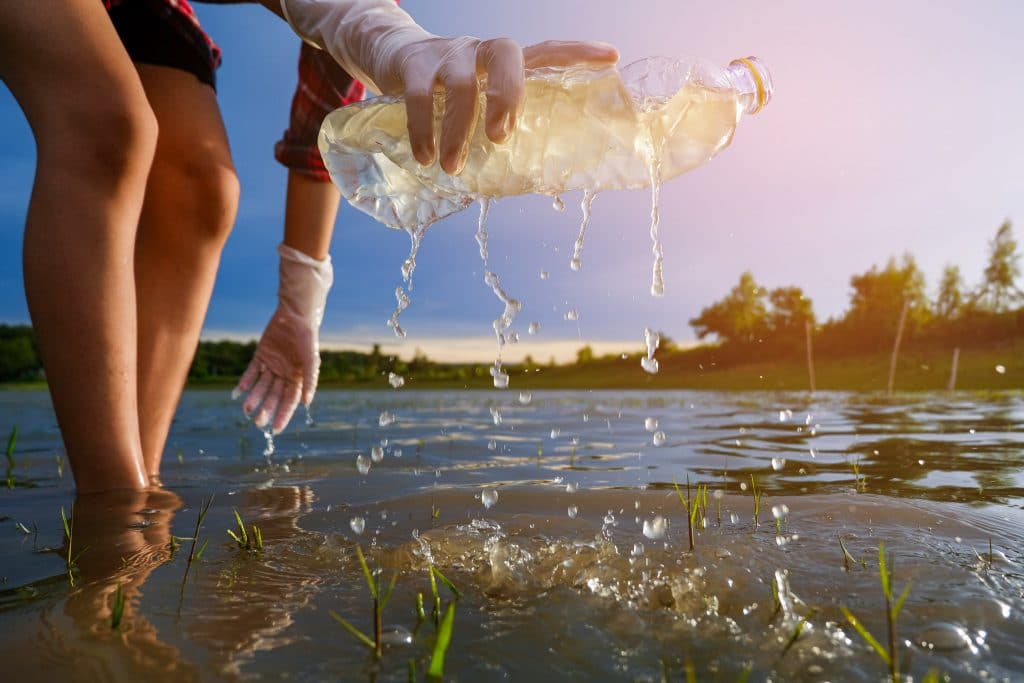Expertise
Is social plastic in textiles really sustainable?
Social plastic, especially ocean plastic is repeatedly promoted as sustainable in the merchandising and fashion industry. But is this really the truth or is it just a sales strategy? Are recycled plastics in textiles really “green” or just “greenwashing” for the sake of financial profit? We shed light on the background here.
Why plastics have no place in textiles
Did you know that, according to a study by the German Federal Environment Agency, only in Germany up to 400 tons of microplastics are released into the environment every year as a result of washing abrasion from plastic fibers? The Fraunhofer Institute for Environmental, Safety and Energy Technology even comes up with much higher values. Fiber abrasion is thus one of the top 10 microplastic polluters in Germany. Not yet taken to account is the fragmentation of discarded clothes, as they can usually no longer be recycled.
The International Union for Conservation of Nature (IUNC) even says that synthetic textiles are the main source of microplastics in Asia, Africa and the Middle East. Even though different studies come to different conclusions – they all provide frightening results. Microplastics are now ubiquitous and the consequences for humans and nature are not yet foreseeable.
Polyester is durable, resistant and comparatively inexpensive. That is why it is also widely used and a upward trend in the fashion industry. It is made from polyethylene terephthalate (PET), a thermoplastic. PET is based on petroleum and thus on a non-renewable raw material that is harmful to the climate and the environment.
For petroleum production, nature, animals and people are irreversibly damaged by clearing large areas of forest, polluting rivers and oceans and exploiting people. Reserves are limited and the methods used to extract the raw material are increasingly ecologically questionable. And honestly, who wants to wear petroleum on their skin?
Yes, but social plastic is sustainable and cleans up our oceans, right?
“Social plastic” or “ocean plastic” sounds good and sells well but is extremely problematic for the environment. In addition to the microplastic problem already mentioned, there are often long transport routes. According to an interview with “Der Spiegel” Kai Nebel (head of the research focus on sustainability and recycling at Reutlingen University), most recycling plants are located in Asia, where there is not enough PET and it therefore has to be shipped in from Europe or America. Furthermore, the collection, washing, decolorization and melting down in the recycling process consume large amounts of resources.
Although recycled polyester requires about 60 percent less energy to produce than new one, the energy consumption here is far higher than for (organic) cotton or hemp.
Moreover, polyester fibers in combination with other fibers such as cotton can usually no longer be recycled and thus drop out of the recycling loop. In the end, the plastic laboriously fished out of the sea ends up back in our environment, but then permanently – as microplastics.
For many consumers, PET recycling justifies the use of plastic because they believe they are doing something good for the environment. However, the truth is that it is not the environment that benefits but the companies that advertise with this kind of greenwashing. If we really want to be environmentally conscious, we should first and foremost rethink our consumption and avoid plastic (as much as possible).
Sources and links:
Sources of microplastics relevant for marine protection in Germany (Umweltbundesamt)
Plastics in the environment: micro- and macroplastics (Fraunhofer Institut UMSICHT)
Primary Microplastics in the Oceans (International Union for Conservation of Nature)
Clothes made from plastic scrap – does that make sense? (Der Spiegel)
Pictures: Pixabay


